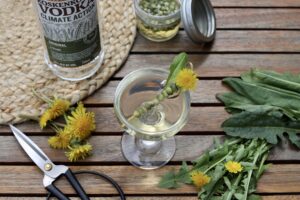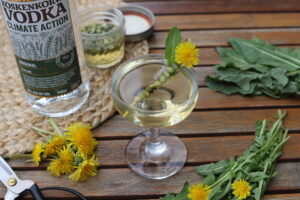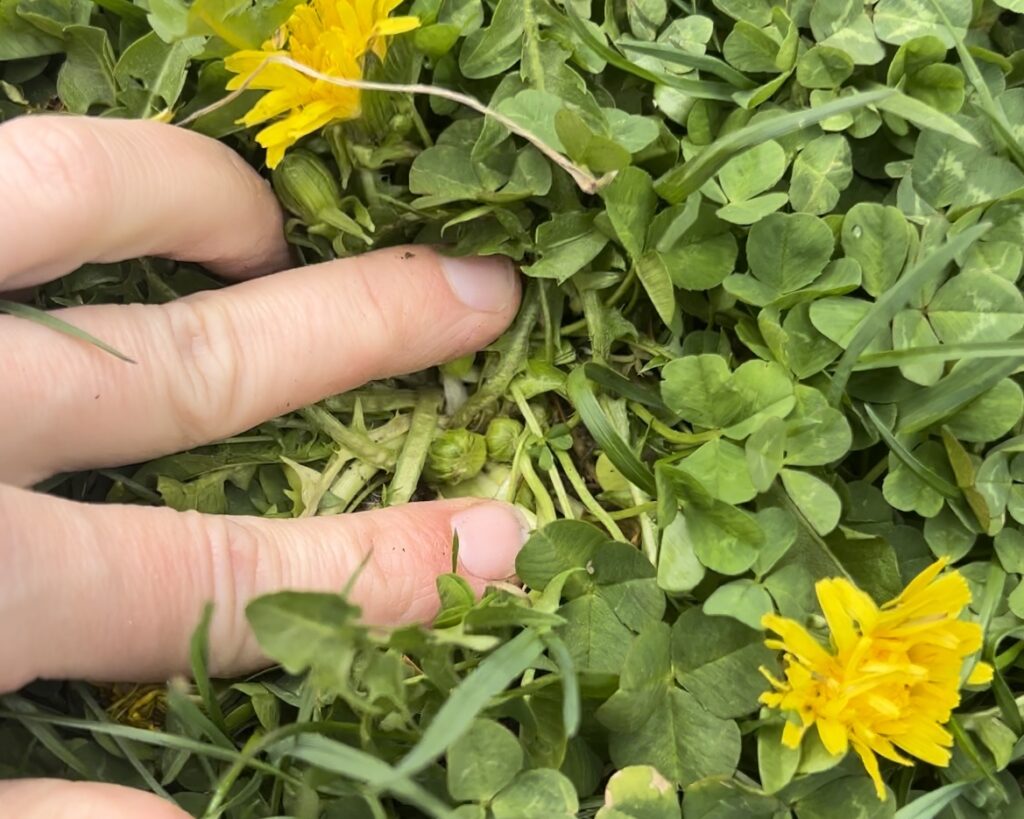
Today I’m working with Koskenkorva Vodka to talk about sustainability! Koskenkorva Climate Action Vodka is part of a collaboration between the brand and the Baltic Sea Action Group. The barley it’s made from is regeneratively farmed, a method that improves biodiversity, prevents erosion and soil runoff, and can even improve soil’s ability to sequester carbon. I’m grateful to Koskenkorva for sponsoring today’s post.
Sustainability in cocktails is a big discussion in the industry. While developing this cocktail recipe, I brainstormed some ways to create a drink that’s more sustainable:
- Make sure you know where the grain, sugarcane, or agave in your spirits comes from and that it’s sustainably and ethically farmed. Look for brands that use renewable energy and eco-friendly practices at their distilleries.
- Use local products whenever possible – not just fruit and produce, but also spirits, liqueurs, and mixers.
- Try to use things you would normally throw out. This can be anything from the rinds of your citrus, to yogurt from your fridge, to jars and bottles.
- And finally, when you do throw things out, try to recycle and compost whenever possible.
Don’t get me wrong – you’re one person, making one little drink, and the difference you’ll make taking these steps is pretty small. There are much bigger problems and much bigger offenders out there. But a small impact is still an impact. And if we alter our habits as consumers, it could eventually change the way the industry works.

So let’s put these guidelines into practice and make a cocktail with Koskenkorva! I mentioned the importance of knowing where your grain comes from – the barley used to make Koskenkorva all comes from Setälä-Eerola farm in Finland. The dry vermouth I used in this drink is made by Vermont Vermouth in Brattleboro – much closer to Boston than Italy or France. And for the final touch, I decided to go ultra-local and do some urban foraging.
Urban foraging is a bit less romantic than the kind you can do out in the woods. You’re going to be finding a lot of weeds and introduced species. But that’s great! No one minds if you pick weeds, and harvesting invasive and introduced species is good for local plants. Just be sure to wash everything very thoroughly, and avoid any areas where the plants may have been exposed to car exhaust, pesticides, or animals.
When you start researching it, you’ll be shocked to find how many edible plants you can find without leaving your neighborhood. But since I have readers from all over the place, I decided to focus on one I know you can all find: dandelions.

Dandelions were introduced to North America from Europe, and now they are ubiquitous. But they’re also edible! The tender greens can be used in salads and the tougher ones can be sauteed. The flowers can be dried and made into tea. And the very young buds, I found out, can be pickled into dandelion capers. I used the instructions and recipe I found on Practical Self-Reliance, and my dandelion capers came out great – shockingly close to the real thing. Capers may be an unusual garnish for a Martini, but I kind of love the concept. Instead of one big olive, you get to nibble on a couple of capers every few sips!
Check out a video of me foraging and making the cocktail here.
Dandelion Martini
2 oz. Koskenkorva vodka
½ oz. locally-made dry vermouth
1 dash dandelion caper brine
Stir all ingredients with ice and strain into a chilled cocktail glass or coupe. Garnish with dandelion capers and a dandelion flower.
This post was sponsored by Koskenkorva Vodka. All opinions are my own.





